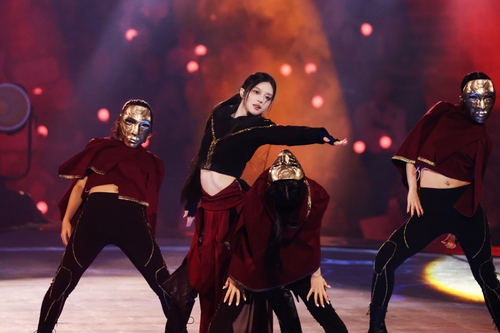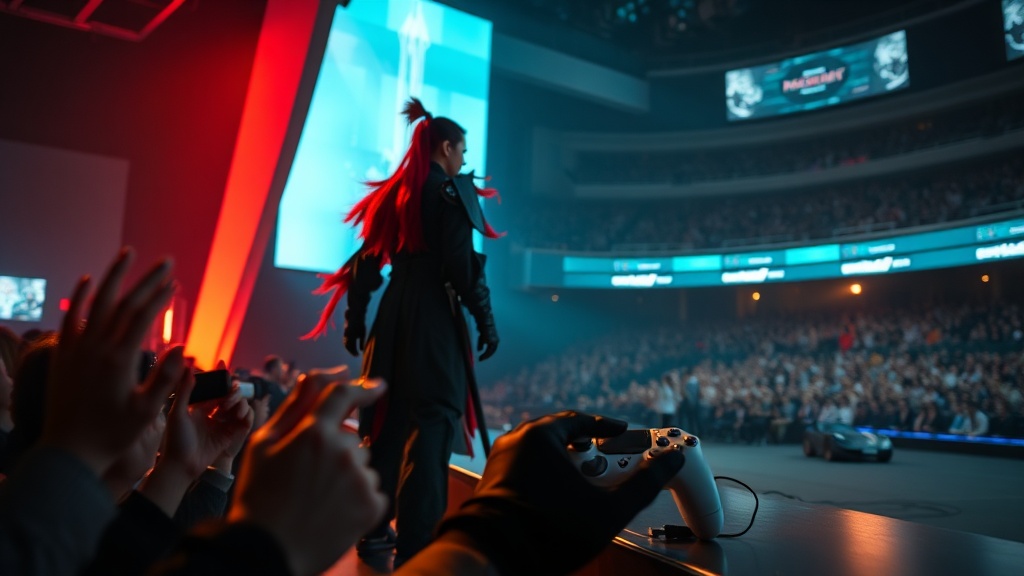On September 28, 2025, at Incheon Inspire Arena, Minju of the K-pop girl group ILLIT opened the LCK finals (League of Legends Champions Korea, the top professional League of Legends league in South Korea).
The stage leaned into the game's lore by adopting the concept of Katarina, a well-known assassin champion in League of Legends.
LED screens and augmented reality (AR) effects were woven together to create a striking live and broadcast spectacle.
Seen this way, the collaboration felt like an important experiment in how esports and pop music might make each other richer.
“A game hero steps onto the stage” — a new kind of ensemble from Minju
Opening: setting the scene
The arena snapped into focused attention.
On that evening the opening blurred the line between concert and game lore.
Minju appeared in a Katarina concept, performing the cinematic themes “Bite Marks” and “Here, Tomorrow” back to back to build a narrative arc.
The production aimed for more than a song set; it aimed to be a short, story-driven experience.
Minju’s performance demonstrated both the sincerity of a fan and the polish of a professional artist.
LED visuals and AR choreography linked the character’s in-game movements to the music, deepening audience immersion.
This moment signaled that an LCK opening can be more than filler.
Instead, it can heighten pre-match tension and expand what viewers get out of the broadcast.

The set design focused on translating a game sequence into a physical stage moment.
AR blades and layered LED backdrops matched Katarina’s visual identity and the songs’ emotional beats.
The result was a visual experience that felt like a live recreation of an in-game scene.
Producers succeeded in transmitting that energy to viewers watching through online streams as well as to people in the arena.
Arguments in favor
There is a fresh cultural dynamic at work.
First, the fusion of game and music creates cultural reach.
This pairing is more than a single event; it can stimulate new content ecosystems.
A K-pop artist on an esports stage means the artist can reach gamers, and the league can tap into pop fans.
Importantly, when an artist like Minju is known to be a genuine game fan, that authenticity increases audience receptiveness.
Key takeaway: music and games together can deepen viewer experience and connect global fan communities.
Second, technical execution strengthens the case.
LED and AR were not just decoration; they were tools for storytelling.
These technologies visually tied character traits to musical rhythms and merged ephemeral stage moments with digital media.
Because of that, the audience did more than watch: they re-experienced a game moment in a new form.
Third, there are clear business upsides.
Cross-industry collaborations can spawn merchandise, sponsorships, and new revenue streams.
Leagues can broaden their business portfolios while artists open new performance avenues.
So these experiments can lead to investment and sustainable industry growth beyond short-lived buzz.
Where fan communities overlap, synergy can turn into long-term brand value.
Such blends drive higher stream numbers and global exposure, which in turn make content easier to reproduce and monetize.
From this perspective, the stage was a positive cultural experiment.
Moreover, an artist publicly expressing love for a game can strengthen ties with fans.
Arguments against
There are valid concerns.
First, the risk of over-commercialization is real.
Esports is fundamentally about competition and strategy.
If productions prioritize spectacle over the match itself, the league’s core identity could blur.
Repeatedly foregrounding elaborate shows risks diluting the viewing experience that competitive fans expect.
“We should focus more on the match itself,” is a refrain that keeps appearing.
Second, fanbase fragmentation is a practical problem.
Game fans and pop fans often want different things.
Some viewers welcome novelty, while others feel the event’s atmosphere has been disrupted.
That split can spread discord within communities and, over time, unsettle the league’s credibility.
Third, there is worry about player preparation and focus.
If pregame ceremonies are too long or too loud, they can interfere with a player’s pre-match routine.
Pro players value consistent preparation, so giant recurring events might indirectly hurt performance.
Thus, event planners should design around protecting athletes’ competitive conditions.
An overly show-driven approach risks undermining esports’ core values.
In addition, fan fragmentation can threaten the long-term health of the content ecosystem.
For that reason, leagues and organizers should prioritize sustained trust over short-term gains.
On that balance, this particular performance had welcome elements — and elements that require caution.
The role of technology and production
Production is a form of messaging.
This stage offered an example of how LED and AR can push technical boundaries.
Technology made character movement tangible and guided viewers’ emotional rhythm.
Simple playback of video would not have produced the same level of immersion.
Therefore, production is not mere ornament: it becomes a central axis of the content experience.

That technical approach is experimental but commercially relevant.
Yet technology alone does not guarantee success.
As always, the success of a production depends on balanced planning.
The aim should be to enrich the viewer experience without undermining the match context.
Online reaction and cultural ripple effects
The reaction was immediate.
After the performance, search and social trends spiked for terms like “Minju” and “Katarina.”
Positive responses centered on authenticity, the production’s polish, and the technical ambition.
Negative responses focused on worries that the show detracted from the competition and leaned too far into commercial spectacle.
That online conversation showed both the limits of cultural acceptance and the possibilities for new shared experiences.
Responses varied across communities.
Some gaming forums insisted on match-first programming and reacted sensitively.
Conversely, music and entertainment communities generally welcomed the novelty.
In short, the event exposed the intersection points between different fanbases.
Industry perspective and future paths
The outlook splits into two main directions.
One path is growth through fusion.
Cross-industry collaborations can create fresh revenue models and help brands reach new territories.
League operators can strengthen partnerships, and artists can expand professionally.
Investment and business model innovation often follow such collaborations.
Bottom line: balanced planning is the key to success.
The other path is identity risk.
Excessive commercialization could erode fan trust and damage the industry’s long-term sustainability.
Therefore, from the planning stage onward, organizers need institutional mechanisms to include players, fans, and community voices.
Clear operating principles that separate the roles of match and spectacle are also necessary.
Summary and recommendations
In short: balance matters.
Minju’s Katarina-themed opening was a meaningful cultural experiment.
Technical polish and artist authenticity are strong reasons to view it positively, but worries about commercialization and fan division remain.
So leagues, artists, and fans should build a shared understanding and continue collaborations within agreed boundaries.
Ultimately, the critical task is to prevent ‘match’ and ‘show’ from eating each other.
To do that, rules that protect competitive quality and principles that preserve artistic freedom should operate in parallel.
It would also help to create feedback loops that incorporate online community voices.
In conclusion, the stage revealed both opportunity and risk.
Future events should avoid chasing short-term headlines at the expense of long-term industry stability.
Otherwise, esports identity may be at stake.
How do you feel about this kind of crossover?